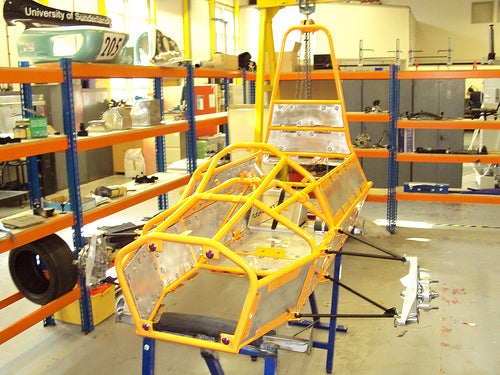Build a Jig to Improve Your Fabrications
Some form of jig is a practical necessity for fabrication in volume, or when dealing with tight tolerances, or both....

Some form of jig is a practical necessity for fabrication in volume, or when dealing with tight tolerances, or both. While it can seem like a lot of extra work, making a jig is within the grasp of the average home builder and can actually save significant time.
When building without a jig, one relies on a tape measure, clamps, eyeballs, levels, and shims; great results can be achieved this way, but it requires skill and patience. With a jig, the parts in a fabrication are held rigidly in the correct location. If everything is cut to the right size, assembly simply becomes a game of putting everything in the jig and welding it together. The benefits for any fabrication in volume should be obvious. Even in one-off fabrications, a jig can provide advantages that more than make up for the time spent building it.

Renault Frame Jig
The DIY frame jig pictured is a perfect example of one such scenario, in which parts of the project – a Renault frame being repaired in this case – need to land in very specific locations which are not necessarily easily measurable in relation to the rest of the frame. This frame jig guarantees correct placement of these points and also provides support for the work as portions are cut out and repaired.
Jigs are not particularly difficult to construct. They consist of a strong frame and a series of attached “arms” that provide pickup points for the parts being placed in the jig. As in the Renault frame jig, structural members are used for the main frame components. Tube sections would be more typically used for their torsional strength, which helps the jig to maintain its form without external support. Pickup points coming off of the frame will be specific to the project you are building on the jig. If you have access to the equipment and the time, consider machining these parts, as they will end up more dimensionally accurate than a welded fabrication. If welding is your only option, pay careful attention to your dimensions, your fixturing of the arm as you fabricate it, and the even application of heat while welding. You should be able to hold tolerances in these welded arms of +/-0.030 inches with some practice.
Jigs aren’t necessarily the solution to ever fabrication problem, but they are an under-appreciated approach that should be a mainstay in the tool kit of more DIY builders.